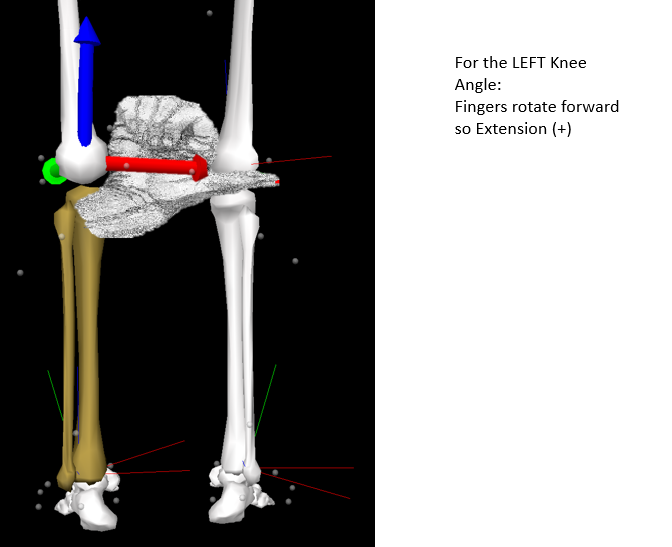Right Hand Rule
Visual3D always follows the right hand rule. The direction of positive rotation about the axis u (red arrow aligned with the right thumb) in the above figure is in the direction of curl of the fingers (blue arrow).
In order to determine the sign of the joint angle or moment, the user must visualize the segment coordinate system that the joint angle or moment is resolved into, then follow the right hand rule. For example, consider the knee moment. The typical knee moment is defined as the shank with respect to the thigh. The default segment coordinate system in Visual3D is x-lateral, y-anterior, z-axial. Therefore, knee extension moment is positive, knee adduction moment is positive, and internal rotation is positive.
Users can negate signals if they don't want to use the Visual3D Right Hand Rule convention. For example, some users prefer that flexion of the hip, knee, and ankle have the same sign when the Right Hand Rule would dictate that the knee flexion is opposite in sign to the hip and ankle flexion. Negating the x-component of the Joint Moment link-model based item will cause the flexion moment to have a consistent sign.
Example: Knee Angle
It's important to understand what is meant by using the right hand rule to determine the sign - because the sign will be dependent on the model definition (X along the mediolateral axis or along the AP or along the Axial - or X to the right or the left, etc). This is just a sample to try and walk you through understanding the signal convention for this specific example.
Here we consider the knee angle, where the X-axis is pointing to the right, the Y-axis points anterior and the Z-axis is axial. Remember when trying to determine the right hand rule - it's typically easiest to imagine the coordinate system on yourself and align your right thumb with where the coordinate system would be, then curl your fingers to determine the positive direction.







